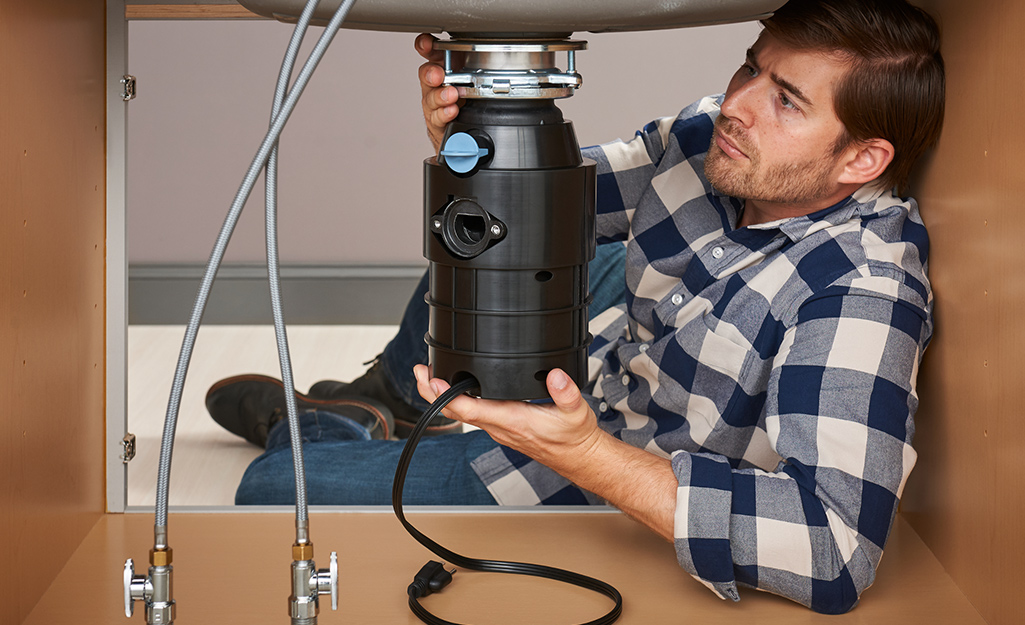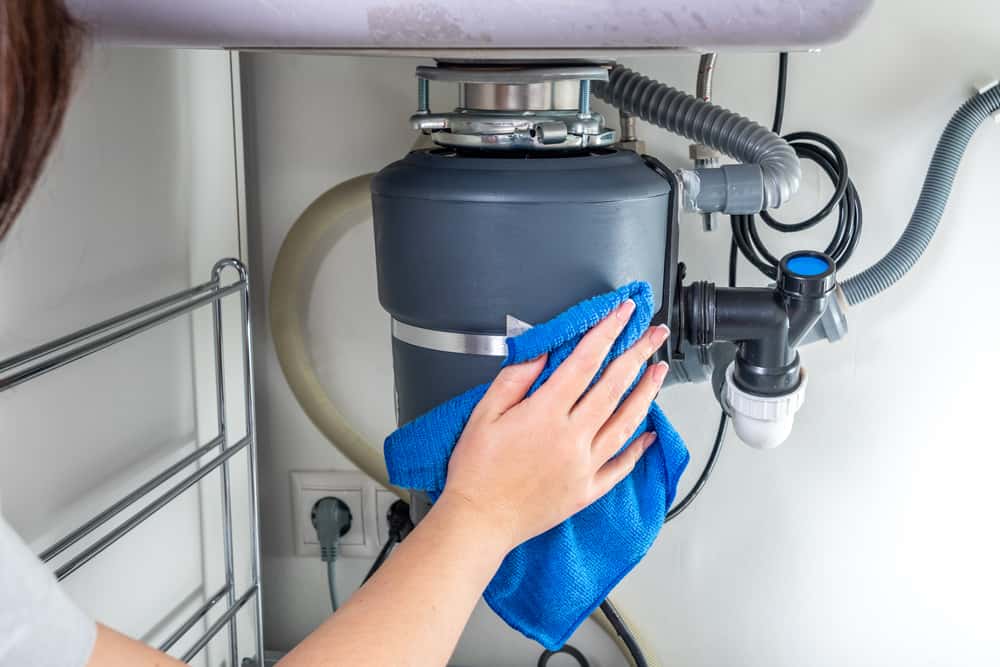Rapid Solutions for Fixing a Dripping Waste Disposal Unit
Rapid Solutions for Fixing a Dripping Waste Disposal Unit
Blog Article
We have noticed this post on How to fix a pretty consistent leak from my garbage disposal below on the internet and thought it made perfect sense to share it with you here.

Waste disposal unit are important kitchen area devices that help in disposing of food waste efficiently. Nonetheless, a leaking waste disposal unit can be an aggravating and messy issue to deal with. Luckily, several leaks can be repaired easily with a few easy actions. In this short article, we will certainly discuss how to fix a leaking garbage disposal efficiently.
Intro
Waste disposal unit are set up under kitchen sinks and are designed to shred food waste right into smaller sized pieces, allowing it to travel through the plumbing system quickly. While these tools are generally trustworthy, leakages can take place gradually because of wear and tear, loosened links, or damage to the system.
Usual Reasons For Leaks in Rubbish Disposals
Worn Seals and Gaskets
Seals and gaskets play a critical duty in protecting against water from dripping out of the waste disposal unit. In time, these components can deteriorate, leading to leakages around the disposal system.
Loose Connections
The links in between the garbage disposal and the pipes system can become loosened gradually, causing water to leakage out throughout operation.
Splits or Holes in the Disposal System
Physical damages to the garbage disposal, such as cracks or openings in the housing, can also cause leakages.
Identifying the Source of the Leakage
Before trying to fix a leaking garbage disposal, it is essential to identify the resource of the leakage. This can normally be done with visual inspection or by performing straightforward examinations.
Visual Examination
Check the garbage disposal device very carefully for any indicators of water leakage. Pay attention to areas around seals, gaskets, and connection points.
Checking for Leaks
One method to test for leakages is by running water through the disposal system and looking for any visible indications of leak.
Devices and Products Needed for Taking Care Of a Leaking Garbage Disposal
Prior to beginning the repair work process, collect the necessary tools and materials, consisting of a screwdriver, flexible wrench, plumbing technician's putty, replacement seals or gaskets, and epoxy or patching material for fixing fractures or openings.
Step-by-Step Overview to Repairing a Dripping Waste Disposal Unit
Shut off the Power
Before trying any fixings, guarantee that the power to the waste disposal unit system is switched off to avoid the threat of electrical shock.
Locate the Leakage
Recognize the precise area of the leak and figure out the reason.
Tighten Links
Make use of a wrench to tighten any kind of loose connections in between the disposal unit and the pipes system.
Change Seals or Gaskets
If the leakage is due to used seals or gaskets, get rid of the old elements and replace them with brand-new ones.
Patching Splits or Holes
For splits or openings in the disposal unit, use epoxy or an ideal patching material to seal the damaged location.
Checking the Waste Disposal Unit After Fixing
Once the repair is complete, examine the waste disposal unit by running water via it to make sure that the leak has been dealt with.
Preventive Upkeep Tips to Prevent Future Leaks
To stop future leaks, it is essential to execute routine upkeep on your waste disposal unit. This includes maintaining it clean, staying clear of putting non-food products or tough objects down the disposal, and occasionally checking for leaks or other issues.
Verdict
To conclude, fixing a dripping waste disposal unit is a reasonably simple process that can be completed with fundamental devices and products. By following the steps described in this short article and practicing precautionary upkeep, you can maintain your garbage disposal in good working condition and stay clear of expensive repairs in the future.
What to Do About a Leaking Garbage Disposal
A leaking garbage disposal often goes unnoticed until you confront a sopping cabinet, a foul-smelling puddle, or an audible drip-drip-drip from the unit. The fix can be frustrating, too, because the leak can stem from a number of components in the system. Fortunately, with a little sleuthing, you can zero in on the leak and—depending on the exact location—stop the icky oozing and repair the component that caused it. Worst case scenario, if it turns out that the garbage disposal must be replaced, installing a new one is a reasonable do-it-yourself task for those with basic plumbing skills. Read on to keep the cash you’d otherwise hand over to a pro.
Prepare to find the leak
Prior to testing the garbage disposal for leaks, unplug it at the wall outlet and turn off the power from the breaker box to prevent electrical shock. Then insert a watertight sink stopper into your sink drain and wipe the unit dry with a clean cloth. In any handy container, mix a few drops of food coloring into a few cups of water, and pour the dyed water onto the sink stopper to help you locate the leak.
Investigate the source
the top, where the disposal meets the sink drain the side, where the dishwasher hose or main drain pipe connects to the disposal or the bottom of the unit Inspect each of these locations while gliding a light-colored rag over the unit; the dyed water will readily show on the rag and reveal the location of the leak. If a leak isn’t immediately apparent, remove the sink stopper and pour a few more cups of dyed water down the sink drain, then check for leaks again. Leaks near the top of the unit are more likely to show themselves while the sink is plugged, while side and bottom leaks are more noticeable while the sink is unplugged.
The metal sink flange that sits directly inside the sink drain is typically sealed around the top with plumber’s putty (a clay-like sealant) and then secured from under the sink with bolts. If the plumber’s putty deteriorates, or the bolts loosen, the flange can no longer form a watertight seal between the sink drain and the disposal—which could cause a leak at the top of the unit.
To reseal the leaky flange, you must first detach the garbage disposal. Start by loosening the screws securing the main drain pipe to the disposal, then loosen the screws in the metal clamp securing the dishwasher hose to the disposal and detach the drain pipe and dishwasher hose from the disposal. Loosen the screws in the mounting ring that connects the disposal to the metal mounting assembly beneath the sink, then pull down the disposal and carefully set it on a clean, dry surface. Loosen the bolts in the mounting assembly with a wrench, then pull down the mounting assembly and set it near the disposal.

I'm certainly very taken with How to fix a pretty consistent leak from my garbage disposal and I hope you enjoyed reading the blog post. Sharing is nice. One never knows, you may very well be helping someone out. We love reading our article about Garbage Disposal Leaking From Bottom.
Call Today Report this page